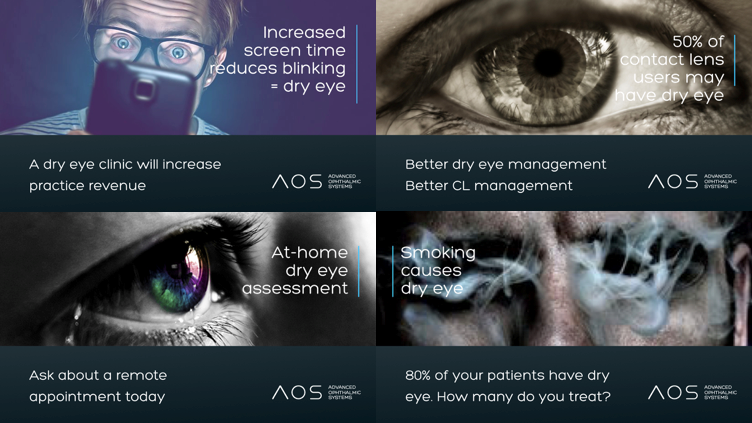The Importance of Dry Eye Assessments: Karl Jeebaun
28th May 2020

Our understanding of the eye is ever evolving. A case in point is the discovery of the Dua layer by Professor Dua, who only had his findings published back in 2013. I had the pleasure of unknowingly sharing an impromptu conversation with Professor Dua on a train heading to ESCRS Copenhagen. We talked about the advances in technology in the industry and how the way we treat, manage and diagnose the eye is constantly improving. We agreed that the more and more we adopt technologies, the more accurate the results become, and which allows the correlations between pathologies to be better understood. The point here is not my random encounters, but the fact that whether directly or indirectly, technology is helping the industry know more about the physical makeup of the eye, root causes of pathologies, and how to better manage or treat ocular conditions at a much earlier stage.
Dry eye – let’s face it – has until recently been dismissed by many as a minor condition or even just a trend or fad designed to sell more product. Did you know that on average 80% of your customers suffer from some sort of dry eye? Even with the amazing work done by TFOS to produce DEWS & DEWS II, we have yet to see this filter down to the everyday eye-care professional. We have dry eye specialists, ocular surface disease specialists and many other specialities that understand that dry eye assessment is a vital part of achieving a better ocular condition – however, it is still not conducted as a matter of routine by all eye care professionals.
Dry eye is now a growing concern due to climatic changes, pollution, pollen, increased screen time, contact lenses, IOLs, and laser surgery to name a few. All can result in your patient having to manage dry eye for the rest of their lives and, if left unchecked, can lead to a worsening of their ocular condition.
In the aftermath of the COVID-19 pandemic, we need to change the way we operate, see patients, better manage conditions remotely and reduce unnecessary chair time. All point to more widespread adoption of technology as the answer, but importantly, how do we do this without the use of all the diagnostic hardware we use as a matter of routine in practice? How can we connect our patients to the clinicians whilst remaining compliant, protecting personal information, increasing loyalty and treatment compliance? All of these are traditionally improved through practice or healthcare system increase efficiencies, reduce waiting lists, increase paid chair time and drive up revenue. The triaging, monitoring and continued assessment of dry eye is now a vital cog in this new ophthalmic landscape, so the tools we adopt need to be fit for purpose.
You don’t use a shovel to dig a hole (although many people do). Best practice is to use a spade to dig the hole and a shovel to “shovel” the remaining debris clear. It is a case of using the right tool for the right job. Telemedicine in this analogy is the shovel, and telehealth is the spade. You could do the job with either, but not to maximum efficacy. Combine them and you become more effective, efficient and more productive!
To run a virtual clinic or in-house for dry eye, ocular surface, or speciality lens purposes, you will need the right tools to effectively meet the challenge. The question then arises: ‘How can I turn this into a viable business or healthcare solution?’. In any case, you can drive up revenues and drive down cost both directly and indirectly, if properly implemented. Next week I will dive into both the business case and the cost savings in more detail – for now though, I’ll leave you with some areas a dry assessment can add value to your business or healthcare system:
- The majority of many opticians main revenue comes from sales of contact Lenses and glasses. By offering a dry eye assessment as a part of a standard eye health check pre sale of either glasses or in particular contact lens, benefits the patient who may already suffer from dry eye before wearing contact lens, which will only make the issue worse and often is then blamed on the contact lens as well as benefit the business from additional assessment fee and OTC product sales.
- Creating a virtual dry eye clinic will enable you to have “persistent touch” with your patients, through remote triaging, preassessments and monitoring, without clogging up practice time or waiting rooms, you can increase your eye health and product revenues, treatment compliance and build loyalty with your patients.
- Pre- and post-ocular surgery dry eye assessments as well as use of digital tools to help with predicting epithelial growth rates, can offer some interesting ways to better manage patients out of practice and increase paid chair times by reducing follow up visits. – Use within speciality lens fitting as in normal practice can help with initial assessment of their ocular condition prior to fit, manage it after, but in this case also help both the practice and contact lens labs by reducing the number of blank wastage the labs save money and the practice has increased chair time available.
The key takeaway is that dry eye is a problem and there is an underrealised opportunity to offer additional income sources, reduce costs, chair time and waiting lists in both a simple and affordable way. Using the right tools and adopting preventative measures within both practices and healthcare systems within ophthalmics as a whole, we can monitor and improve both individual cases and the wider landscape.
To find out more on how we at AOS are addressing this please contact us to find out more.
Author: Karl Jeebaun

